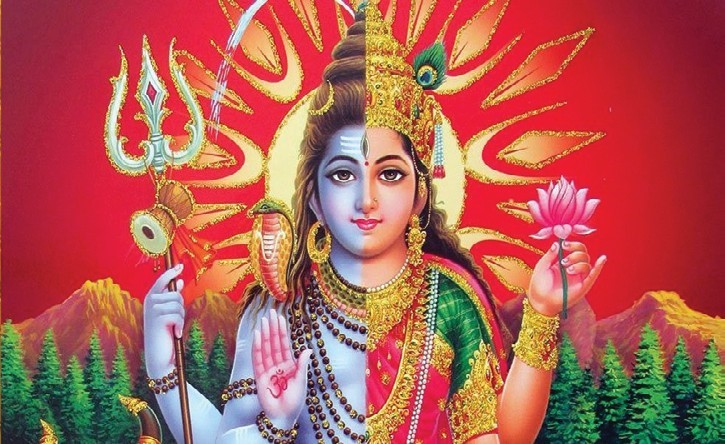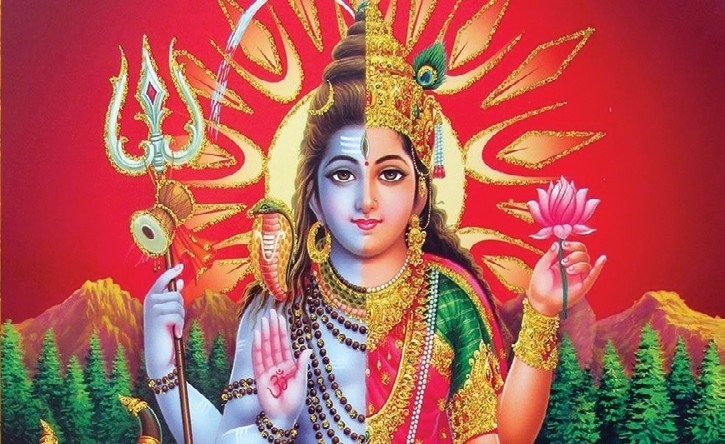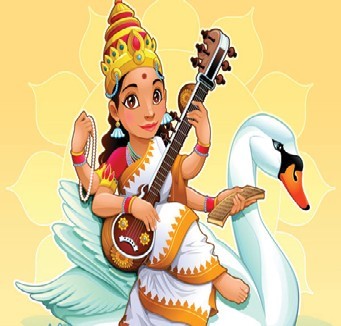Indian mythology is one of the most diverse and inclusive of all. Some of the primary sources of Indian mythology, that is basically synonymous with Hindu mythology owing to the prevalence of the ancient religion on this land for centuries, are Vedic literature, Puranas, epics Mahabharat and Ramayan, regional literature of significance such as Periya Puranam and Naalayira Divya Prabandham, and even fables of popular texts such as Panchatantra and the Hitopadesha.
The sources of information are aplenty and all point in one direction that regional mythology is replete with stories and tales and legends that symbolise inclusion of anything and everything. Even an insect, a tree, a stone, a bird, an animal, etc., has a place in society. It’s interesting to note that even today, there are remnants of these beliefs that can be seen in rituals, customs, festivals, folklore, etc.
Gender inclusion in mythology
Hindu scriptures have always spoken of the third gender. One of the earliest references of transgender in mythology was Mohini – the female avatar of Lord Vishnu. Mohini, which translates to the one who enchants, played a big role in settling the duel between devas(Gods) and asuras(demons) for the amrut(nectar). In Mahabharat, Mohini comes when the gods and the demons were churning the ocean (samudramanthan) – with the help of Lord Vishnu who is in a tortoise avatar or kurma – to acquire elixir of immortality or amrut.
Mohini makes a reappearance in the Vishnu Purana when she used slyness to save Lord Shiva who had just given a boon to a demon Bhasmasura that he could incinerate anyone whose head he touches. Bhasmasura wanted to test his new power by placing his hand on Shiva, who then went to Lord Vishnu for help. It was then Vishnu appears as Mohini, the enchantress, who tricks Bhasmasura to turn himself into ashes.
Not just this, the origins of Shankara – Narayanan (Hariharan) in the Linga Purana is also attributed to the merging of Shiva and Mohini (Vishnu). This legend is associated with the procreation of Shiva and Vishnu resulting in the creation of Ayyappa (who is also referred to as Hariharaputra – son of Shiva and Vishnu). Also called Dharmasastha and Manikandan, Ayyappa is a Hindu deity popular in Southern India and considered to be the epitome of dharma, truth and righteousness and is often called upon to obliterate evil.
Supreme status of transgenders
Ardhanarishvara form is an androgynous composite of Lord Shiva and goddess Parvati. Various Puranas transcending timelines have attributed different reasons behind this perfect combination of Purusha and Prakriti that symbolises that the male and female principles are actually inseparable and two sides of the same coin. A similar union between Goddess of wealth and prosperity, Goddess Lakshmi, and her husband Lord Vishnu forms the androgynous composite Lakshmi–Narayan.
In Ramayan, transgenders play an important role when Lord Ram is sent to exile. Upon his banishment from the kingdom, Lord Rama was asked to spend 14 years in the forest, in exile. His followers followed him to the forest but he requested all the ‘men and women’ to return back to the city of Ayodhya.
It was then that the transgenders (hijras) stayed back and waited for his return. Moved by their devotion, Ram took them all by their hands and led them into Ayodhya. Lord Ram was greatly moved by love and devotion and blessed them with the power to confer blessings on to others on auspicious occasions such as child birth, marriage, etc. In the Ram Rajya (Ram’s rule) that came to be, it was inclusive to the core and had a place for the third gender as well.
In Mahabharat, when Arjun rejects the sexual advances of Urvashi, the nymph, she curses him that he will lose his manhood. Lord Indra limits the curse and says it will only last for a year and the year will depend on Arjuna’s choice itself. So, during the thirteenth year of exile, Arjuna hides as a eunuch dancer in the women’s quarters in the palace he king of the Matsya Kingdom, Virata. Virata is the titular character of the Virata Parva – the fourth book of Mahabharat.
A place for one and all
Lord Jagannath who is the incarnation of Lord Krishna or Lord Vishnu is worshipped in the Indian states of Odisha, Chhattisgarh, West Bengal, Jharkhand, Bihar, Gujarat, Assam, Manipur and Tripura. The Rath Yatra is a huge event that witnesses millions of devotees, marked by the pulling the carriages or the Rath.
Lord Jagannath’s deity has no hands and no feet and the deity is a reminder that all forms of gods are acceptable. In this religion, all forms of gods, deities and beliefs have a space, and a sacred space. Lord Jagannath’s idol is a carved and decorated wooden stump with a symmetrical face, large round eyes and a conspicuous absence of hands or legs.
The Jagannath Temple at Puri, Odisha is regarded as one of the Char Dham pilgrimage sites in India. The temple is a massive 61 meter structure and one of the best surviving specimens of Kalinga architecture and has been one of the major pilgrimage destinations for Hindus for centuries.
Inclusion and wealth of knowledge
Mythology has taken its current form owing to thousands of scriptures. The Vedas that are a rich source of knowledge are divided into four parts with hundreds or thousands of hymns and prose passages.
Hinduism is the only religion with a vast wealth of scriptures and that too in several ancient languages. Then there are several Puranas (ancient legends), the two epics Ramayan
and Mahabharat, six Vedangas (ancillary Vedas), Sutras (summary texts), Agamas (tantric texts), Gitas (songs or poems), Itihasas (histories), Bhashyas (commentaries) and Dharma Shastras (law books).
Hindu mythology has a special place for animals and elements of nature. The ancient religion has recognised the rights of the animals to co-exist with humans. Animals, trees, other elements of nature are worshiped in Hinduism, even given the status of gods and goddesses.
The Dashavatara are the ten primary avatars of Lord Vishnu who is said to descend in the form of an avatar to restore cosmic order. The word Dashavatara is derived from dasa (meaning ten) and avatara (means incarnation). The ten avatars are Matsya (fish); Kurma (turtle); Varaha (boar); Narasimha (man-lion); Wamana (dwarf god); Parashurama (warrior); Rama; Krishna or Balarama; Buddha or Krishna or Vithoba or Jagannath; and Kalki.
Two-thousand-year old Panchatantra has a special place for animals. It contains numerous stories in which the animals have been given prominence. It is an ancient Indian collection of interrelated animal fables in Sanskrit verse and prose.
Hindu deities have a vehicle (vahan) they travel on and it’s mostly an animal or a bird. There are several legends and stories associated with these animals and birds as well. They are very important to the existence of the God or the Goddess.
Goddess Saraswati’s vehicle is a peacock, Lord Shiva rides the Nandi bull, Lord Vishnu sits on Sheshnaag, the serpent, Parvati or Durga or Kali rides the lion, Ganesha sits on a mouse, etc.


 Ardhanarishvara
Ardhanarishvara Godess Saraswati riding a peacock
Godess Saraswati riding a peacock